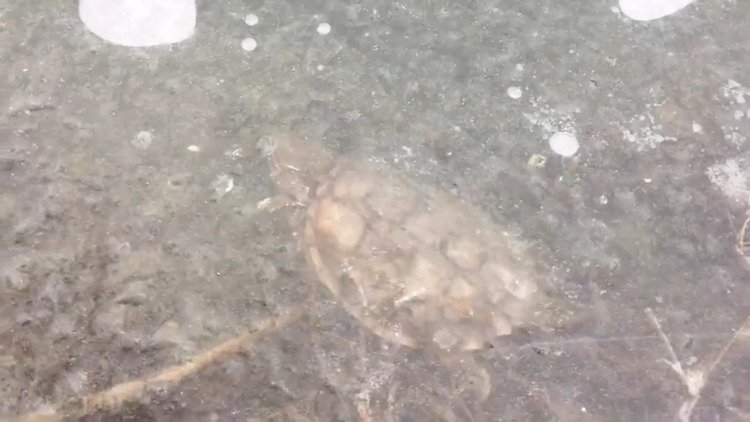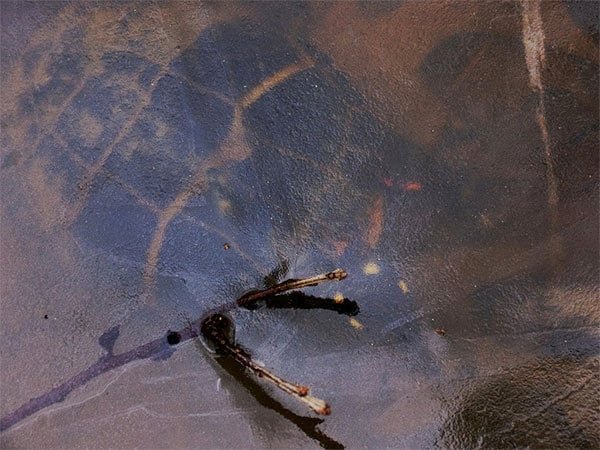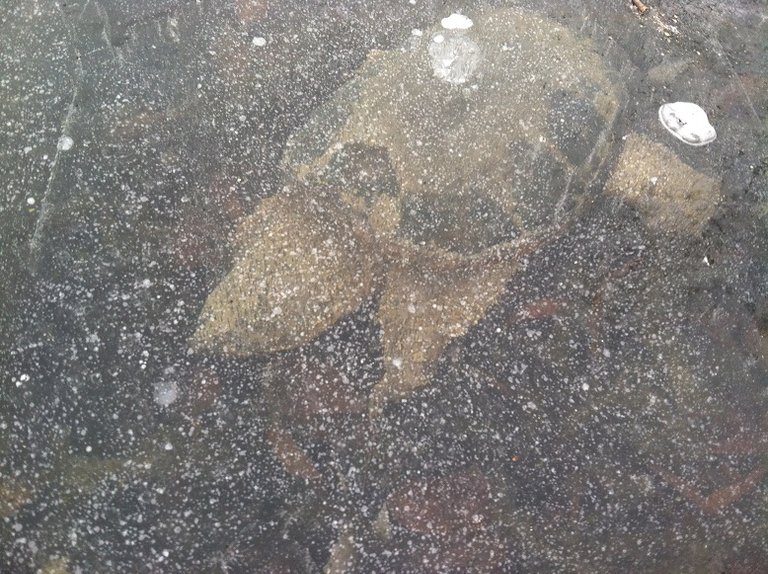Last year, I wrote a post that briefly described the means by which reptiles and amphibians survive the harsh winter months. Being ectothermic or "coldblooded", herptiles have to come up with some rather drastic habits to survive the cold as they are incapable of generating their own body heat; many different species have adapted their own unique means of surviving. However, because I was writing about several major groups of reptiles and amphibians, I was unable to go in-depth into any particular group, and so there was a lot of interesting information that was omitted for the sake of brevity. Today, I wanted to expand on what I started, this time focusing in on one group that has taken winter survival to an extreme: the turtles. Turtles are remarkably unique animals. Having existed for over 220 million years, turtles have evolved some pretty radical means of overcoming environmental pressures, making them truly one of a kind. A huge part of their success comes from their rather extreme measures of overcoming the winter season.

Like all herptiles, turtles are ectothermic. Unable to generate their own body heat, their internal temperature is dictated by their environment, and changing that temperature requires physical relocation to a warmer or cooler location. This means that if the temperature of a pond during winter is 1℃, then so is the turtle's body. However, there is a limit to what turtles can survive; with very few exceptions, adult turtles will not survive freezing temperatures and ice crystals in the body are lethal. For this reason, aquatic turtles will spend the winter underwater rather than underground in a burrow. The water behaves as a buffer, keeping the turtles' body temperatures relatively stable and above freezing because it has a high specific heat. If you don't quite remember back to your chemistry classes, a high specific heat means that it takes a lot of energy to change the temperature, so the water temperature will remain far more stable than the air. Underwater, a turtle should survive quite comfortably with little fluctuation of temperature.

Turtles may be aquatic champions, but they require oxygen just like any other reptile. Spending the winter in a pond presents a major challenge: ice will often freeze over the surface, preventing turtles from surfacing for a breath of air. However, because of a bizarre relationship between their metabolism and body temperature, turtles can easily survive for weeks or even months without surfacing for air. In frigid waters, the metabolism of a turtle is incredibly slow, meaning that the animal requires significantly less energy and oxygen to survive. Less oxygen demand still means that they require oxygen however, so how do these animals breathe? Turtles are able to absorb oxygen by uptaking it across vascularized surfaces flush with blood vessels (the same way our lungs absorb oxygen). This allows them to support the minimal oxygen demand without using their lungs. And turtles have one area that is especially well vascularized: their butts. Called "cloacal respiration", turtles actually survive the winter breathing through their butts!

Once sealed by ice, there is another hurdle to overcome: there is a limited amount dissolved oxygen in the water stored up from the summer (produced by aquatic vegetation). During winter, very little oxygen is added to the water, and this dissolved oxygen is being used not only by the turtles, but by the other animals residing in pond. As the oxygen levels drop, the pond will become hypoxic (low oxygen content) or even anoxic (completely depleated of oxygen). When this happens, even cloacal respiration cannot save the turtle; while some can survive such conditions, others cannot.
Snapping turtles and painted turtles are especially adept at overcoming this complication. When oxygen levels drop too low, they simply shift to a form of metabolism that doesn't require oxygen. It's an amazing ability that allows them to survive in extreme conditions (painted turtles can survive without breathing for up to five months!), however this ability can be dangerous or even lethal if it goes on for too long. Because of the metabolic shift, acids will build up in their muscles (painted turtles are true champions; by metabolizing the calcium in their own shells, they can neutralize much of the accumulated acids, kind of like a human taking calcium-based antacids for heartburn!). Even when spring comes, the turtles are not quite out of danger. As they emerge from their ponds, their bodies are essentially one big muscle cramp. This is similar to what a human experiences after going for a run; your body has shifted to anaerobic respiration, causing a buildup of lactic acid that give you a painful cramp. The turtles will do their best to bask in the sun and warm up; once they fire up their metabolism, they can eliminate the acidic by-products. However, until they do so, they will be slow and vulnerable to predators and other hazards.
Turtles may take an extreme approach to surviving the harsh winter weather, but their success as a species cannot be challenged. With some species spending over half their lives in these frozen conditions, the turtle has found some radical means of surviving conditions that would be lethal to many other organisms. Hopefully this post have given you a new appreciation for turtles and their ability survive even the harshest natural conditions.


My eyebrows shot up at the abilities of the Painted Turtle to survive up to five months! That is incredible! I always heard that turtles breathed through their butts. As a child, I was told they would die if turned upside down because they would suffocate...is any of that true? Or was it just a silly thing I was told by my older brother?
If turned upside down they do have some trouble breathing...though honestly I think most would be able to right themselves again before they suffocated. So yeah, I'd say it could be true but is unlikely!
Good to know. At least now I don't have to freak out if my children find one and look at its belly. Thank you!
My wife asked me just the other day what turtles do for the winter, and I didn't really have an answer. I wish I had known all of this. It would have made for a much more interesting conversation!
I can't wait for my kids to get home so I can educate them on turtle butt breathing! Haha!
Now you know for your next Christmas party!
Nice good very nice article is amazing you good article like this my page
I really do have a better appreciation for turtles. Too bad people aren't butt breathers!
I think some people are...like teenagers. Hahaha!
LOL!
Well said turtles happen to be like snake that need really depends on sun light so that they can be more active than ususal, i keep thinking @herpetologyguy what does the sunlight really revive in them that make them to really depend on sun that much.
Truly bizarre. Coming from a subtropical climate, I've wondered what happens to such creatures in colder climates.
Wow!! That is really amazing!
I learned something new today... :)
Thanks!
Saya benar-benar sangat menyukai postingan anda, follow me @tjunaidi.
good post friend I liked a lot I hope you can see my last post, I'll follow you